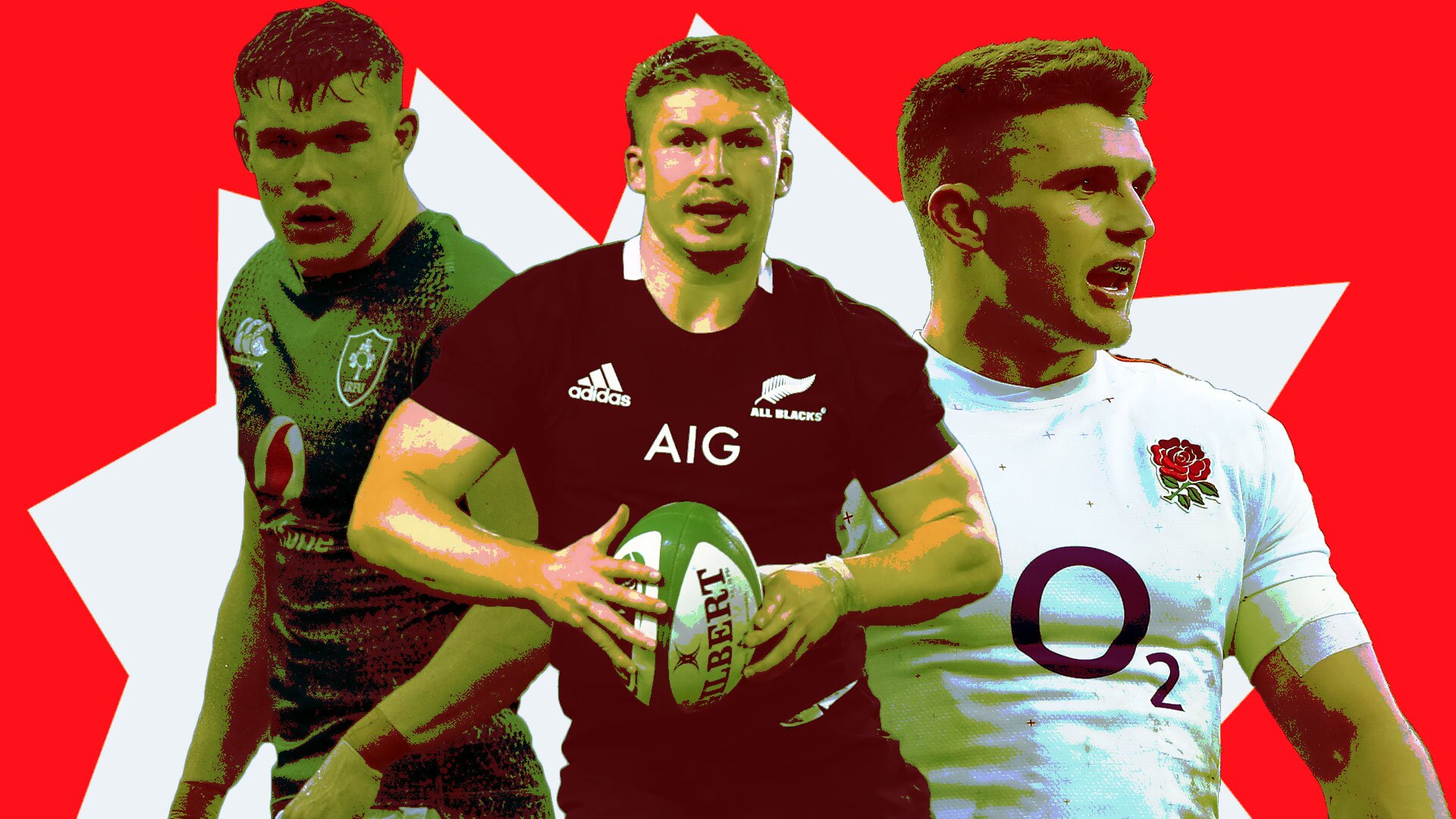The modern-day midfielder - how rugby's most demanding position is asking for more

Never before has one position been required to do so much, or at least be capable of doing so much.
The modern-day midfielder, in particular the outside centre, has been the subject of transformation in the last decade morphing into a collection of multiple positions.
The athlete profile is demanding, it requires a specimen who can dash 40-metres in 5-seconds, but also power lift or bench press as much as a front rower. Combine the speed and acceleration of a winger, the distribution skills of a flyhalf, the strength and endurance of a loose forward not to mention the ability to diagnose and recover from disadvantageous situations in defence.
The non-negotiables for the position are growing, shaping a new breed of midfielder and pushing one-dimensional talents elsewhere as the game’s requirements change.
Consider England’s midfield mix that Eddie Jones has settled on earlier this year – Manu Tuilagi, the prototype power-running centre of the Noughties, has found a new home at 12 while the skillful, balanced playmaker Henry Slade is the preferred option at 13.
This has ignited England’s backline play and opened up far more opportunities for the outside backs like Elliot Daly, Jack Nowell and Jonny May, many of whom are also versatile multi-positional assets themselves. With the addition of Scott Wisemantel, England’s attack has been far more prolific and potent over the last 12-months.
Slade’s diverse skill set includes better ball-handling, ball-playing ability, and an attacking kicking game while being more agile, faster and fitter than Tuilagi. His game has been shaped by playing many positions in the backline earlier in his career, including fullback and flyhalf. As his body has matured in size, he is now the perfect model for this new breed of 13 whose value is only just now being fully understood.
Now more than ever midfield defence is about spacial coverage, not about forceful collisions and big hits. It is geared for ‘space eaters’ with multi-directional speed who can go sideline-to-sideline to close overlaps or rush up and bring pressure and take time away.
https://www.instagram.com/p/BtdE9ERg1zy/
As long as they have good technique to close the tackle at a high completion rate, they don’t need ribcage-rattling physicality to belt the opposition. They need to be more adept at body position and understand leverage in the way NFL cornerbacks do, and then complete tackles from a wide variety of angles.
Slade and Ireland’s Garry Ringrose are some of the best examples of centres who do this. Their elite conditioning allows for high-line defence on high percentage of phases, with a deep capacity to re-load and bring heat time and time again for the full eighty. They can jockey-off and backpeddle to save situations, recover from the inside to chase down outside runners or simply put the front-on spot tackle on.
https://www.instagram.com/p/BtiFlm6Aw0P/
The advancement of structured phase play in attack has bought rise to the idea of multiple first receivers who play a traditional flyhalf role. It has become an interchangeable part.
Consider the Crusaders’ first receiving usage: Richie Mo’unga takes the lion share with anywhere between 30 to 40% but midfielders Ryan Crotty and Jack Goodhue combine for around 25% of the touches as secondary options.
Distribution skills are absolutely necessary as the midfielders are called on to relieve first receiving duties when the flyhalf is tackled or caught at the breakdown. Without an honed an accurate passing game, run-first centres won’t be able to operate in teams that play in possession-based rugby structures.
There are some tremendous physical athletes at outside centre who can make game-breaking runs – Huw Jones, Jesse Kriel, Samu Kerevi, Jonathan Davies. All are quality players but would be considered in the second tier of 13’s behind Goodhue, Crotty, Slade and Ringrose who have more accuracy in other facets.
The Reds have moved Kerevi, who played every game at 13 on the Wallabies’ end of year tour, towards 12 this year in Super Rugby, utilising his strengths as a carrier but protecting his weaknesses as a defender. Kerevi has been one of the best players in Super Rugby, flourishing in a more suited role.
The Crusaders perhaps have two of the world’s best who can play outside centres in their midfield. Crotty over the last two years has played a lot of 13 for the All Blacks but 12 with his Super Rugby team, allowing Goodhue to develop to the point where he has now the All Blacks main option. As sharp as Crotty has been this season at 30-years-old, the younger Goodhue is still probably the better-suited 13 option due to youthful athleticism.
In the Pro 14 final this weekend, Leinster’s Garry Ringrose will suit up at outside centre. In the Premiership semi-finals, Henry Slade will line up for Exeter while European champions Saracens also use the versatile Alex Lozowski who is in the same mould. The Crusaders’ are hot favourites to take home a third consecutive title, with Crotty and Goodhue.
All the world’s best clubs have them, but they are perhaps the rarest breed to find and develop, making the modern-day midfielder an important commodity and changing the dynamics of the position.
Was Glen Jackson hungover while referring the Chiefs vs Blues?:










































































